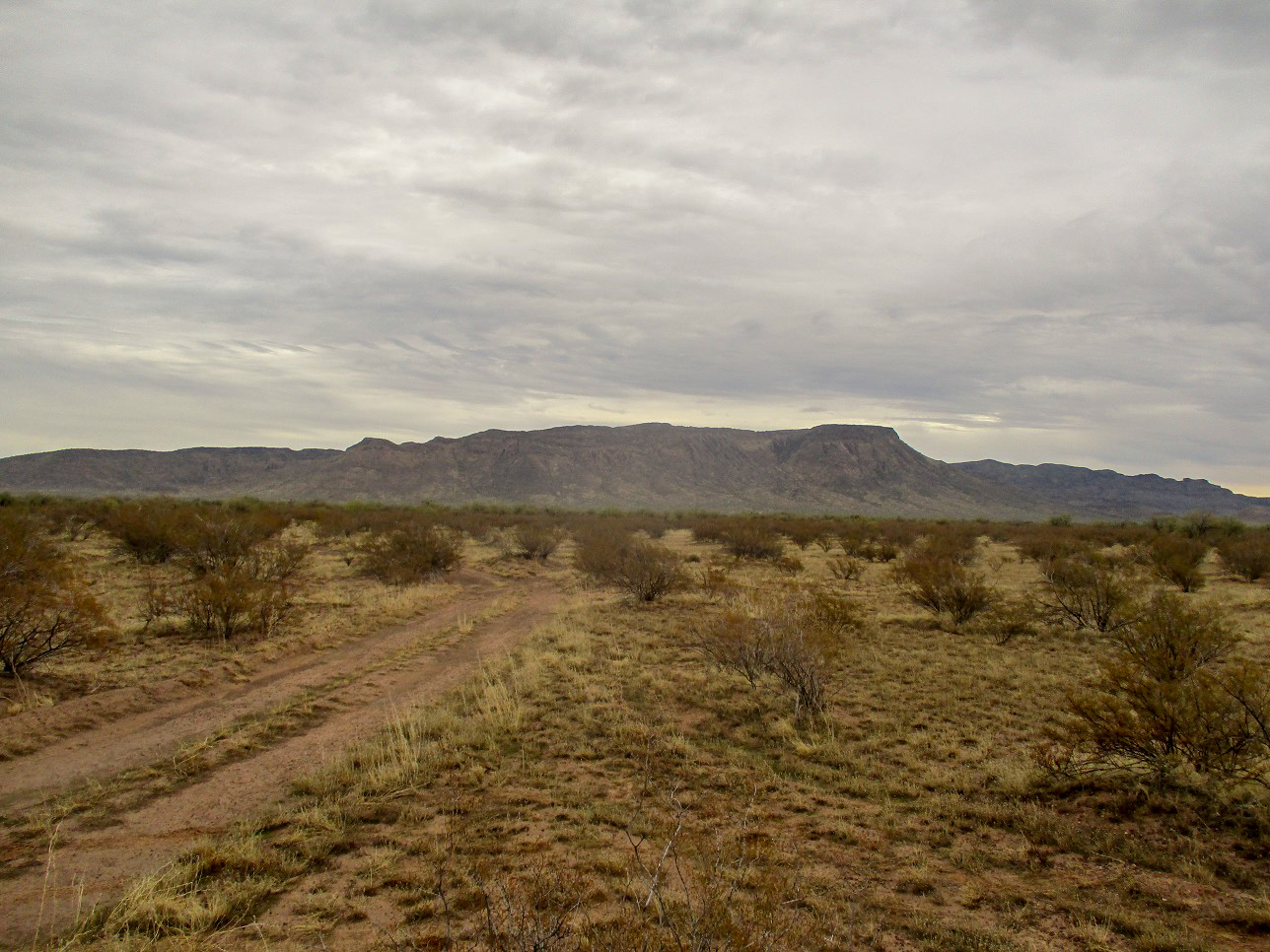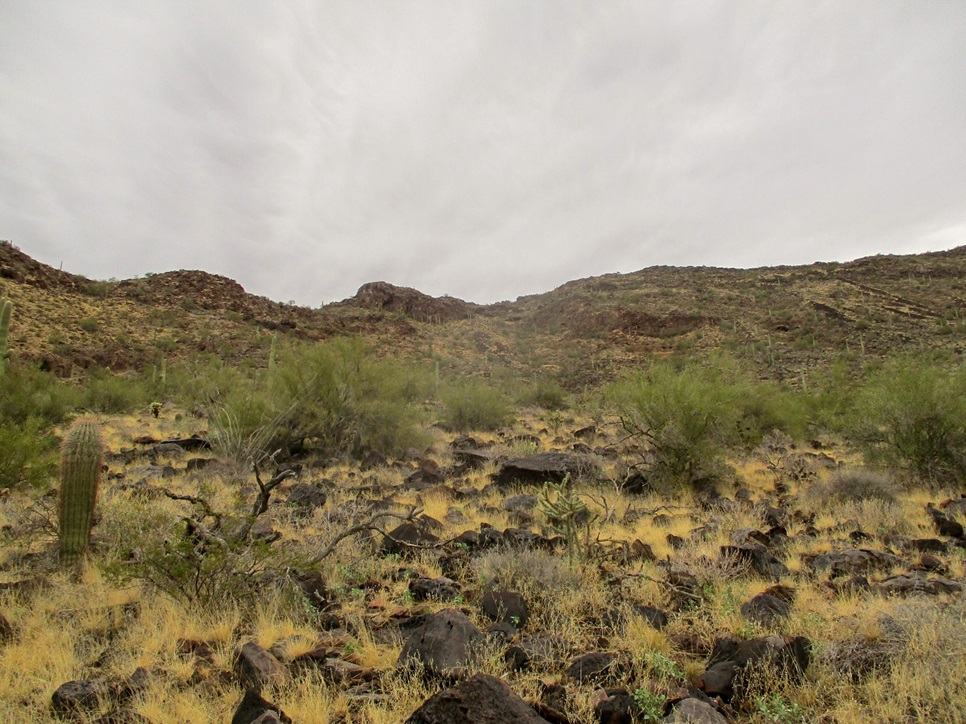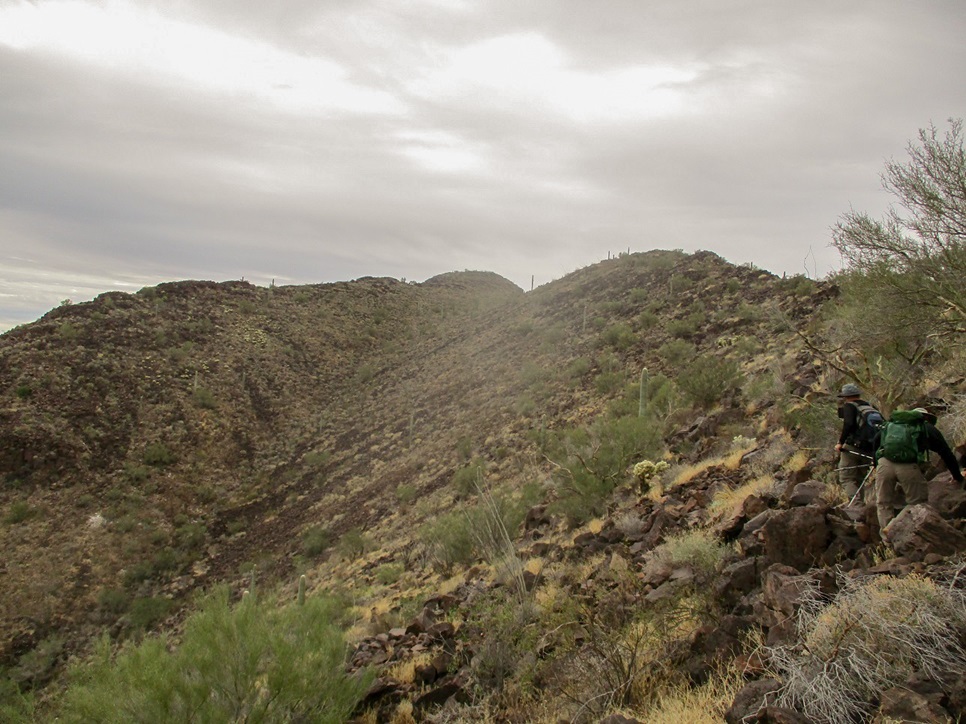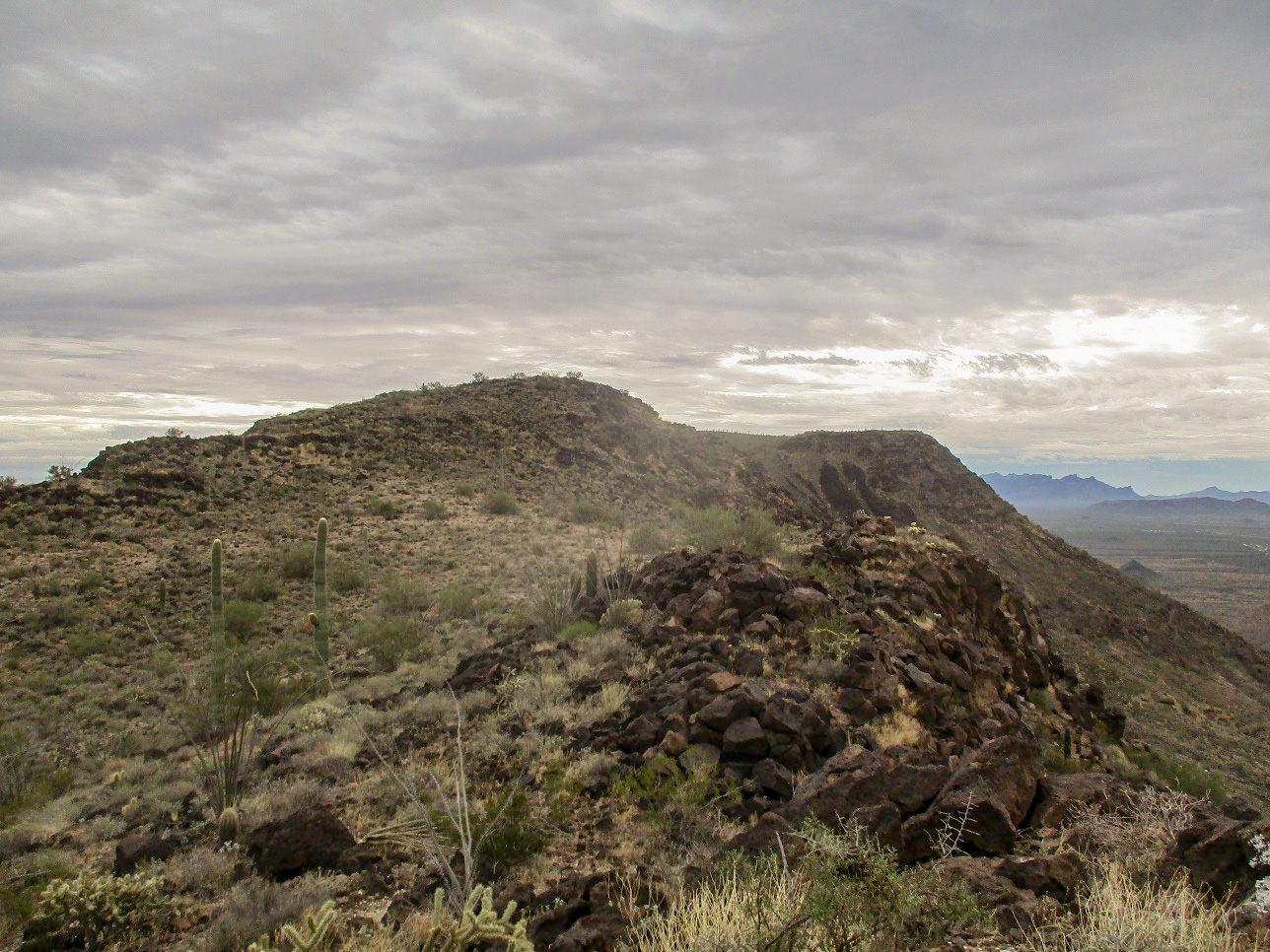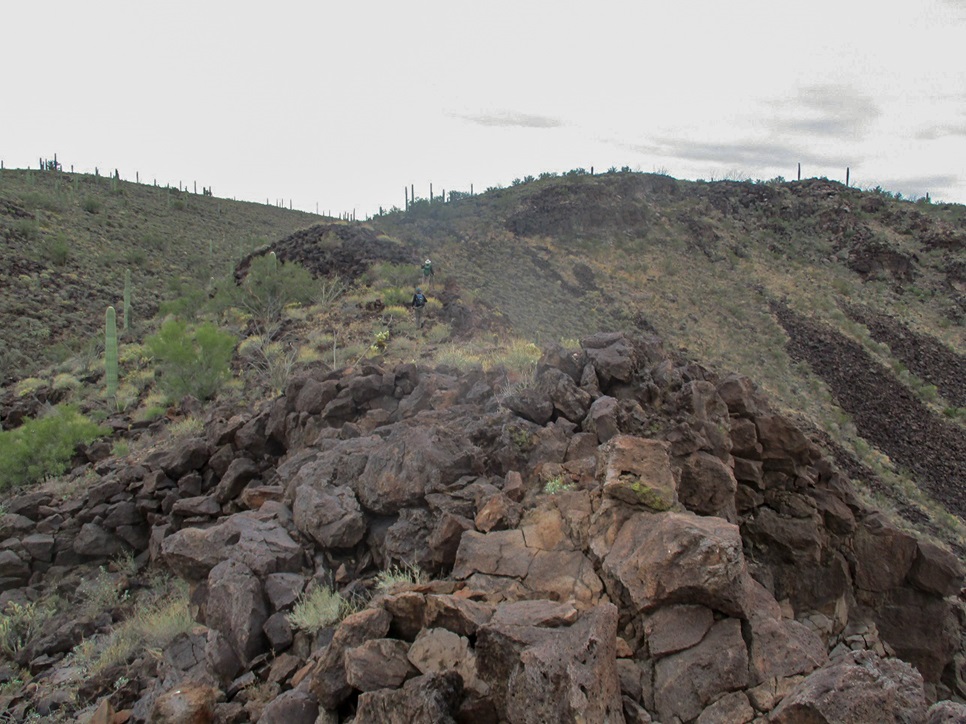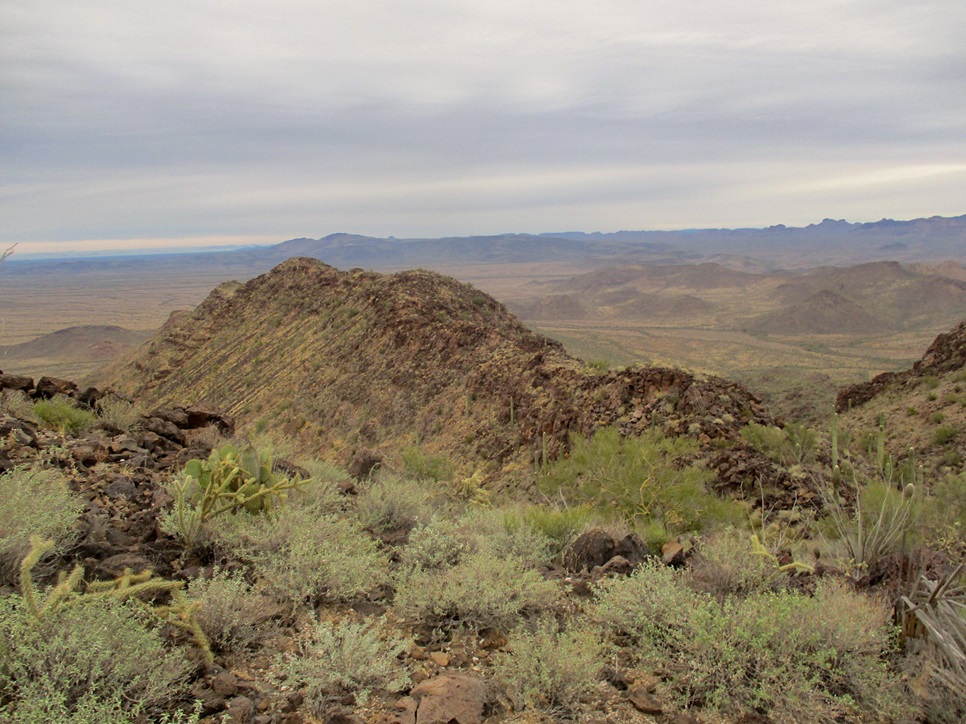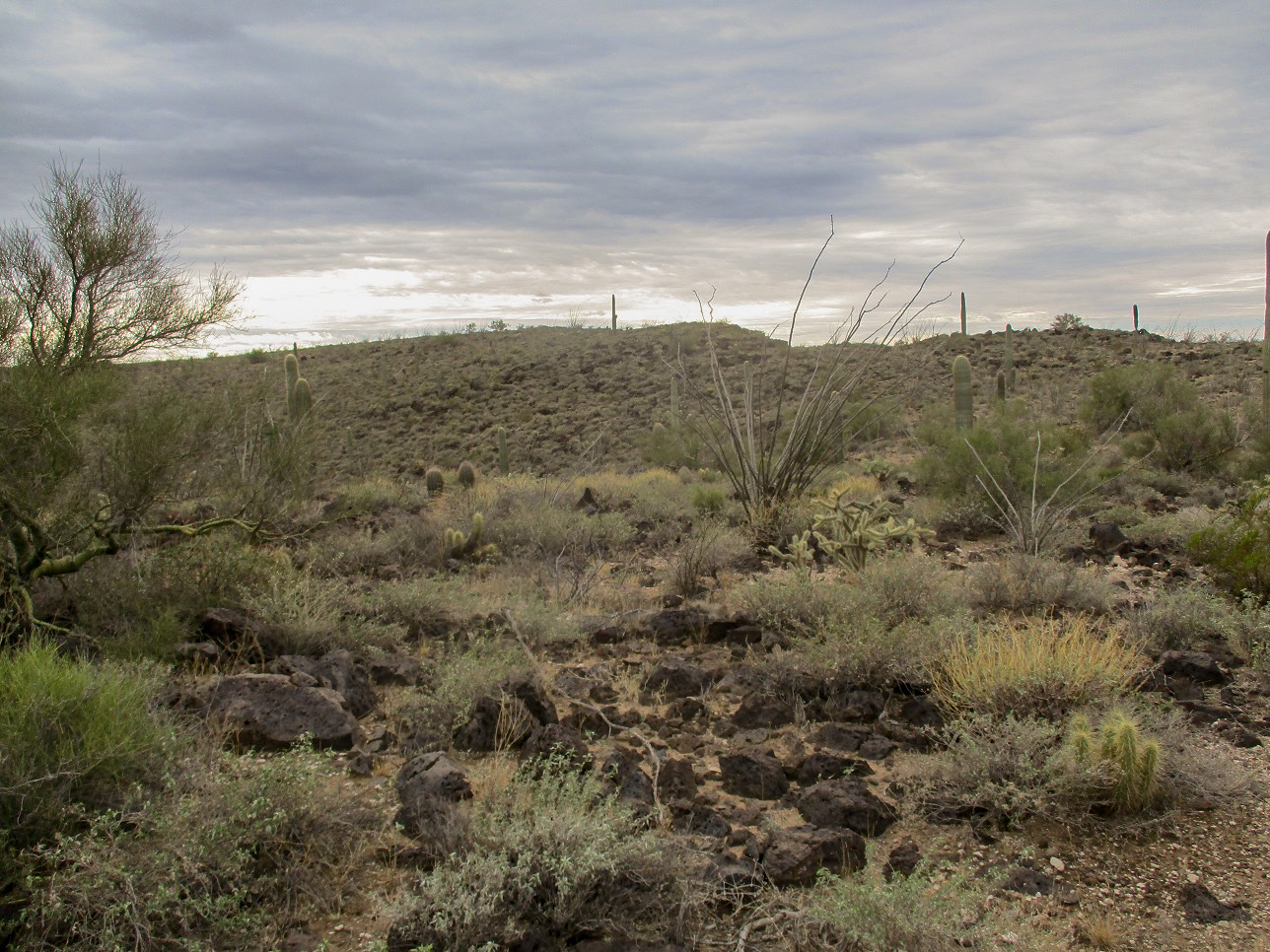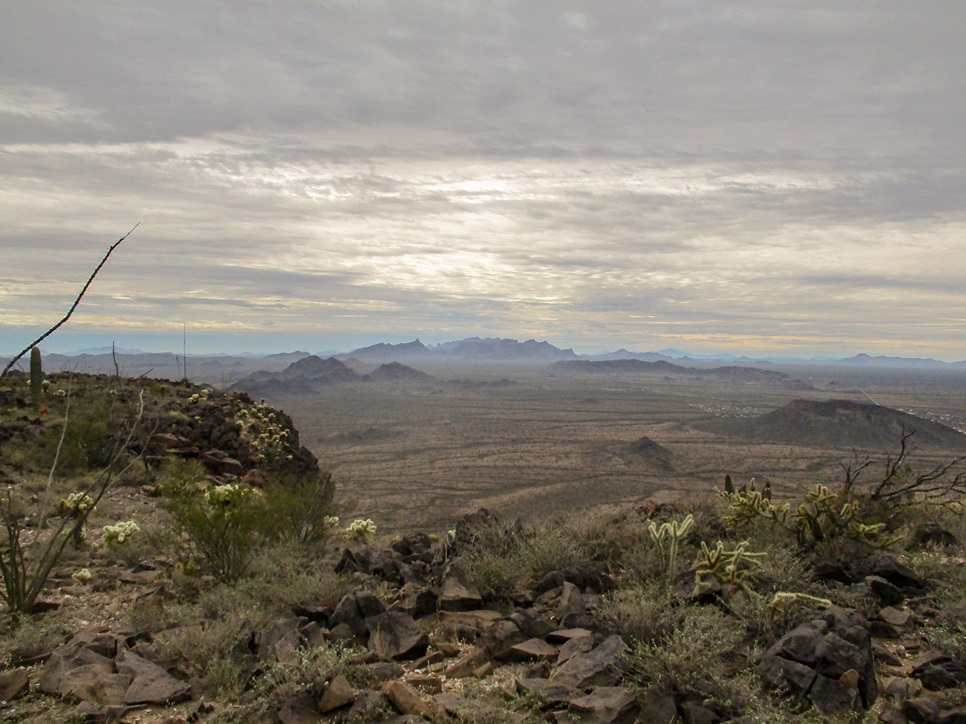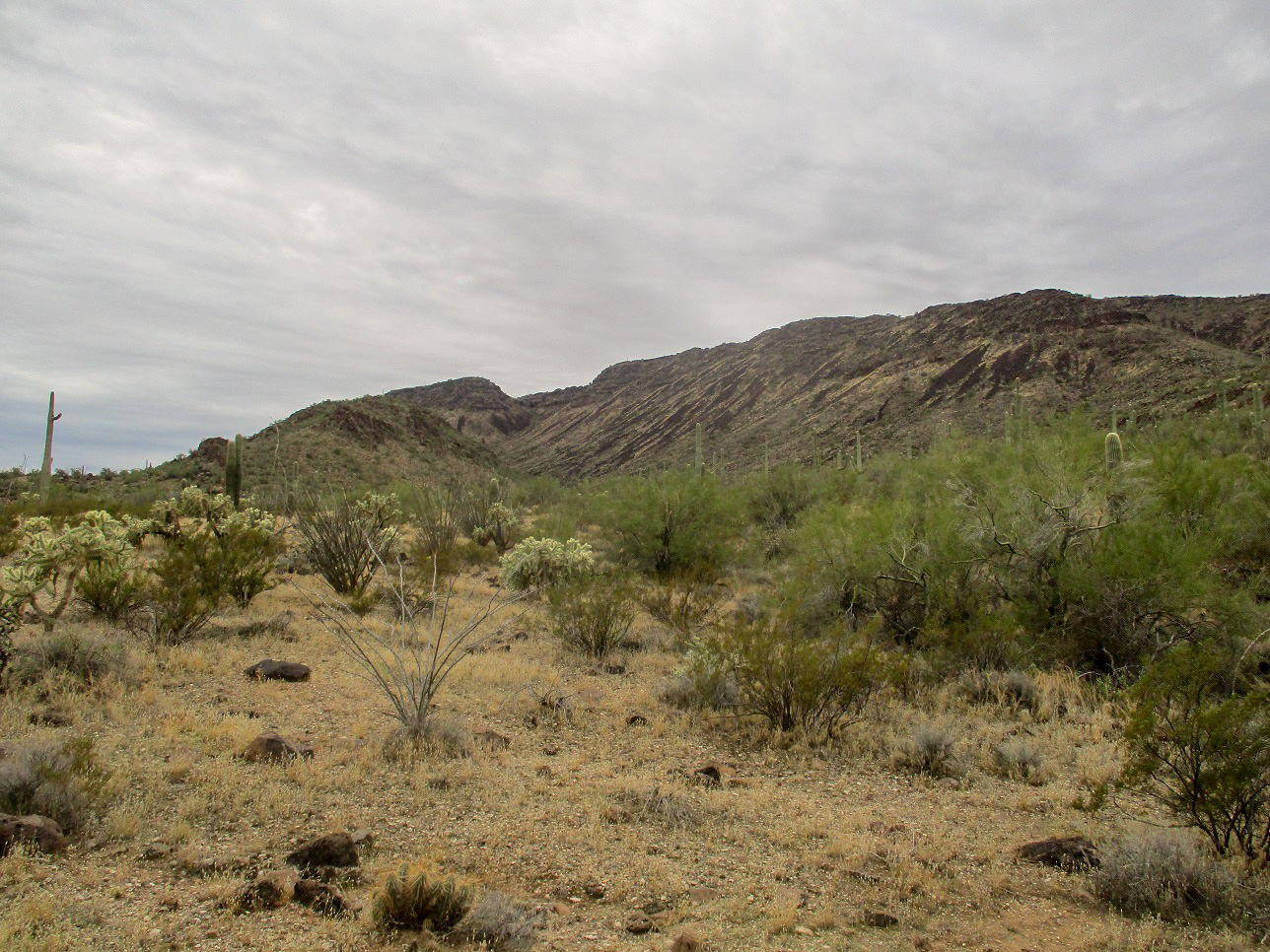
The Mountains of Arizona
• www.surgent.net
|
| Childs Benchmark |
• Highpoint: Pozo Redondo Mountains • Tohono O'odham Indian Reservation • Pima County |
|
Date: December 8, 2019
• Elevation: 3,097 feet
• Prominence: 1,077 feet
• Distance: 10.5 miles
• Time: 7 hours and 45 minutes
• Gain: 1,430 feet
• Conditions: Heavily overcast and cool
• Teammates: Matthias Stender, Scott Peavy
Arizona
•
Main
•
AZ P1K
•
PB
•
LoJ
The Pozo Redondo (Round Well) Mountains rise about ten miles east of Ajo and a few miles north of Why, straddling the Tohono O'odham Indian Reservation. Childs Benchmark is the highest point, although we could not locate the disk when we were on the summit.
The three of us met at Matthias' place an hour before dawn, and Scott drove us to the range, following the usual route through Maricopa, Gila Bend and Ajo. The drive covered about a hundred miles, and we were in Ajo about 7:30, the sun now up, although heavy cloud cover from a storm two days ago would block out the sun the whole day.
We left state route AZ-85 at a bend in the highway, easing onto BLM-8107. Scott drove us in about another mile, parking in a random open area. The road was marginal, with high centers and ruts and a little slick from the recent rains. We were about two miles west of the mountains.
We could see our route from the car. From a distance, the mountain has a long, uniform ridge, with the highest point being at the south end (our right) of the ridge. So we started walking at 8 a.m., following the road another mile and a half east to where it bent north. We left the road and walked through the open desert to the base of a fan-shaped slope. It appeared to be a friendly slope and would put us on the ridge about a mile north of the summit.
This slope worked well. It was steep but with good footing almost all the way to its top, where it met the rocky crown that lines almost the entire ridge. We gained about 800 feet to here from the car. Finding a way up through the rocks and onto the ridge took some time.
We angled right and hiked along the slope-rock margin until we found possible weaknesses to scamper up. We ended up picking our own routes through the rocks. The climbing itself was just class-2, but the rock was covered in smaller stones and brush, making progress sometimes slow and annoying. But we were soon on top the ridge. It was about this time a helicopter was hovering low over the desert west of us, coincidentally in the general area where Scott parked his car.
We now had about a mile of the ridge to follow southbound. We had to hoist ourselves up some more rock ledges until we were on am ugly slope of blackened lava rock, emanating down off of the first of what seemed like a hundred rock outcrops along this ridge. We sidehilled past the first significant peak, which went slow. In degrees, the footing seemed to improve and we achieved a saddle below another subpeak along the ridge, rocky just like the last one.
We also stayed left (east) of the main ridge, and worked past these rock outcrops one at a time. It was slow but at least we were moving consistently. Up ahead was a "smoother" slope, looking to be free of rock outcrops. We worked our way to it, and for about ten minutes, had an enjoyable easy hike along "regular" ground and easy slopes. I was hoping this was the end of the rock outcrops, but knew it wasn't. In fact, we were only about half way along the ridge.
The easy hiking ended quickly and we were back to the rock outcrops. These were smaller but there were more of them, each one about 15-20 feet high and maybe a hundred feet long, with steep notches between them, one gendarme after another. We would often split into three, each picking a way. If each worked, we'd simply meet at the other end. Otherwise, we'd backtrack or merge along the way. I worried that each one would be the "showstopper". But at worst, the scampering was just steep class-2, with some low class-3 moves in a couple spots.
Finally, we were nearing the end of this ridge, the rocks giving away to broader slopes of brush. This portion went quickly and we arrived onto the summit plateau a little before noon. The one-way hike had taken us almost 4 hours, that ridge being the biggest (and slowest) obstacle. I was happy to be done with it.
We came upon the old surveyor's station, a jumble of rocks and old wiring. We found the register, but not the benchmark, which we assume is buried under all the rocks piled up at this summit. We signed in and noted that not many people come here, which was no surprise. The day was still cloudy, gray and cool.
The highest point seemed to be about 500 feet to the southeast, about two or three feet higher than the surveyor's station. We walked over to it, walked around and tagged rocks. The summit plateau is pretty big and covers about two acres. We had good views south at the Ajo Mountains, but there was no decent lighting for good photos.
We spent about a half hour on the summit, wandering about and looking at things. We agreed to not bother with that ridge again, but instead to drop down the steep gully that trends northeast off the summit. We had studied it from the ridge and did not see any obvious drop-offs or things that would stop us. We got our packs back on and started down the gully.
The gully was as expected: rocky, brushy and convoluted, but it was bombproof the whole way down. We dropped a lot of elevation quickly, and in about a half hour had dropped most of the elevation, placing us close to the desert flats. However, chooing this route meant we'd have to walk around the entire north ridge to get out, adding over two miles to the hike.
We were soon onto the flats, finding a great cow path that trended north, then west. We walked and walked, coming back to the road (BLM-8107). We were still about three miles from the car. We followed the road as it wandered a little bit, but there were no surprises. It fed us back to Scott's car like we expected. We arrived back at about 3:45 p.m., a hike of nearly 8 hours. Going by the GPS stats from both Matthias and Scott, we covered roughly 4 miles on the ascent, and about 6.5 miles for the descent and walk out. We changed clothes and got moving, heading back to Phoenix, arriving after dark (which comes early this time of year).
I was pleased we were able to summit this peak, but it did not come easy. The gully would be a good ascent route. It would be a tedious, steep and brushy route but it would work. The road, BLM-8107, looks to be a decent road with a few spots of erosion, sand and rocks. A normal high-clearance 4-wheel drive should be sufficient in dry conditions. One could drive to the mouth of the canyon and catch the cow path there. Thanks as always to Scott and Matthias.
|
|
